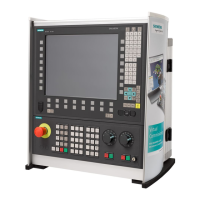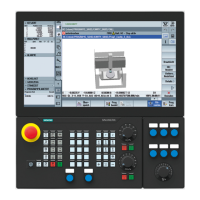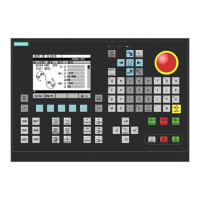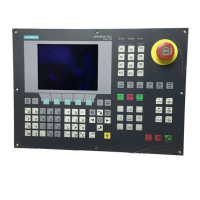Detailed Description
2.1 General functionality
Travel to Fixed Stop (F1)
2-8 Function Manual, 08/2005 Edition, 6FC5397-0BP10-0BA0
Terminal 663 with MD37002 controllable
With the machine parameter:
MD37002 FIXED_STOP_CONTROL
the response to pulse blocking on the fixed stop is controllable.
Deleting the pulses by terminal 663 or the IS "Pulse enable" DBX31, ...DBX21.7 will not
abort the function. As a result, the drive will press against the fixed stop again without any
further operating action when the machine is restarted.
The rise time of the torque corresponds to the time needed by the current controller of the
drive to reach the limitation again.
If the pulses are deleted when a deselection is active (waiting for PLC acknowledgments),
the torque limit will be reduced to zero. If the pulses are reactivated during this phase, torque
is no longer built up. Once the deselection has been completed, you can continue traversing
as normally.
FXS commands programmable in synchronized actions
The parts program commands FXS, FXST and FXSW can be programmed in synchronized
actions/technology cycles.
The function FXS[x]=1 can also be activated without movement; the torque is limited
immediately. As soon as the axis is moved via a setpoint, the limit stop monitor is activated.
In static and blockrelated synchronized actions, the same commands FXS, FXST, FXSW can
be used as in the normal parts program run. The values assigned can result from a
calculation.
Ramp for torque limitation with MD37012
A ramp has been implemented so that the setting of a torque limit is not to jerky.
For this purpose, the amount of time required to reach the new torque limit is specified in
machine data element:
MD37012 FIXED_STOP_TORQUE_RAMP_TIME.
2.1.2 Response to RESET and function abort
Response to RESET
During selection (fixed stop not yet reached) the function FXS can be aborted with RESET.
The termination is carried out such that an "almost achieved" fixed stop (setpoint already
beyond the fixed stop, but still within the threshold for the fixed stop detection) will not result
in damage.
This is achieved by synchronizing the position setpoint to the new actual position. As soon
as the fixed stop is reached, the function remains operative even after RESET.
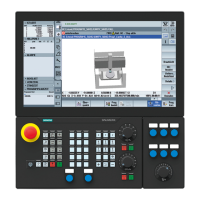
